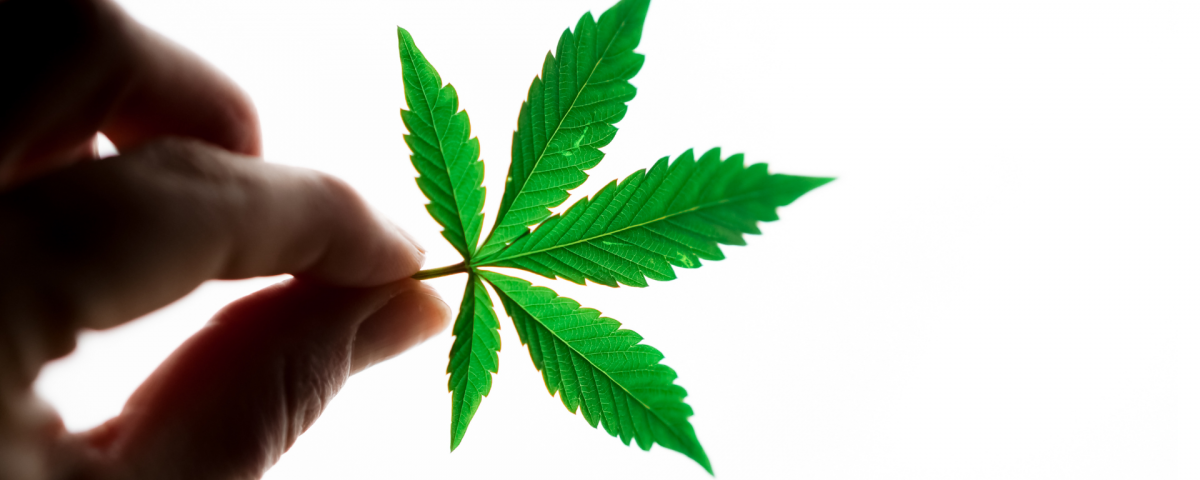What is Incidence Rate (IR) in Market Research?
September 27, 2022
Intellicast S5E29– MRX Trends and How to Plan for the Road Ahead with Brooke Reavey of Dominican University
October 10, 2022Back in 2019, one of the first “hot topics” we included in our research-on-research was about the legalization of marijuana. While evaluating the overall sample landscape and determining differences among panels is our main goal of our research-on-research, we can include questions about current events and hot-button issues, including marijuana legislation and perceptions around its usage. We continued researching this issue in 2022.
Belief In Legalization
Overall
2022 has the highest percentage of people that believe that marijuana should be legalized at 60%. This is an 11% increase from 2021.

Gender
When looking at perceptions of marijuana legalization by gender, we see that in 2022, more than 50% of both males and females believe marijuana should be legalized. Males are 5% more likely than females to believe that marijuana should be legalized. Males saw an 11% increase from 2021 and females saw an 8% increase from 2021.
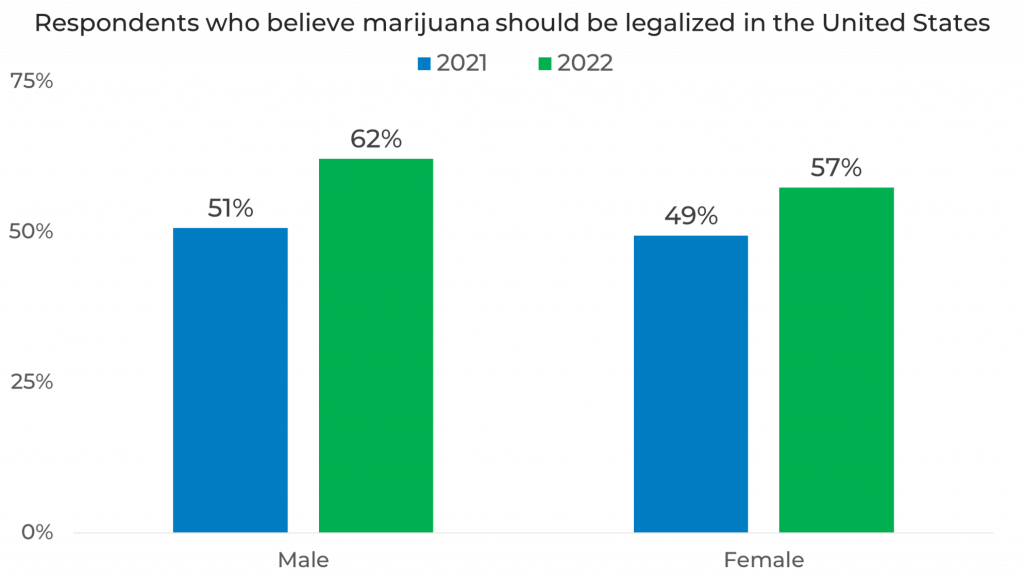
Political Affiliation
When it comes to political affiliation, we saw that nearly 50% or more of people are in favor of legalization, regardless of party. Respondents from both parties also saw an increase year-over-year with Democrats who believe marijuana should be legalized increasing by 11%.
Democrats are 19% more likely than Republicans to believe that marijuana should be legalized with the gap between Democrats and Republicans who believe marijuana should be legalized increasing 4% from 2021.
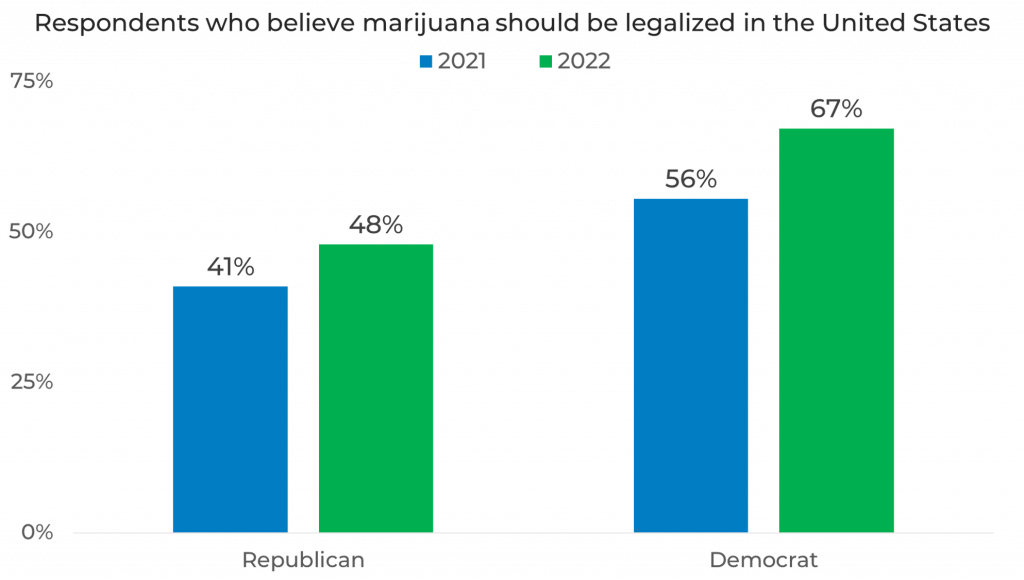
Age
When looking at age, we found that there was an increase across all ages in people who believe marijuana should be legalized. People between the ages of 18 and 44 saw an increase year-over-year between 11% and 14% in those who believe marijuana should be legalized.
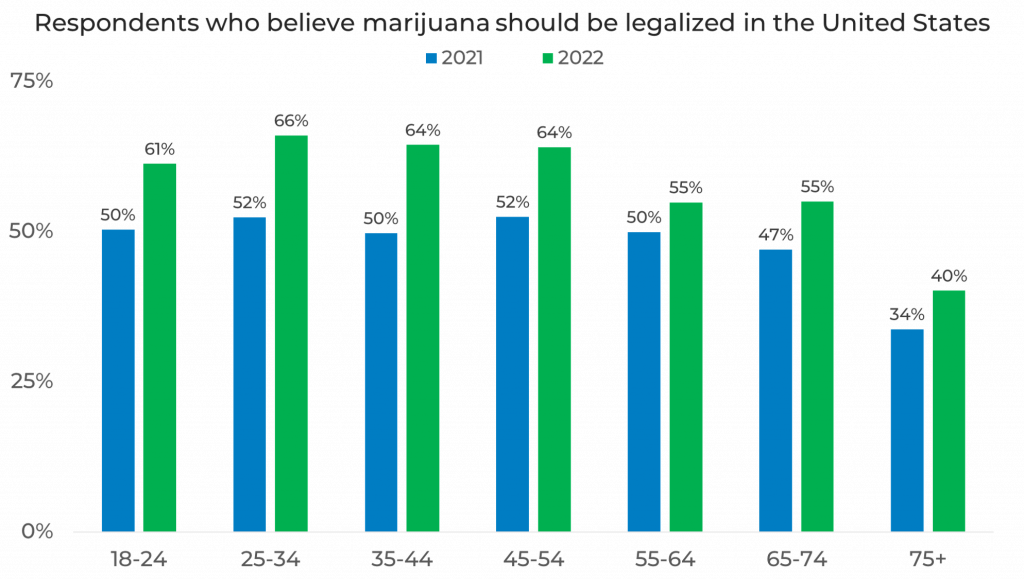
Panel
We see up to a 14% difference among panels which contrasts with the 11% difference we saw among respondents overall. We also see up to a 21% increase in panels year-over-year when looking at respondents who believe marijuana should be legalized.
These differences can be due to differences in panel makeup, management, and more. For example, a 21% increase YOY is much higher than the 11% increase we saw in respondents who believe marijuana should be legalized overall. This could mean that this panel has had an increase in younger respondents who we know are more likely to feel favorably toward marijuana legalization.
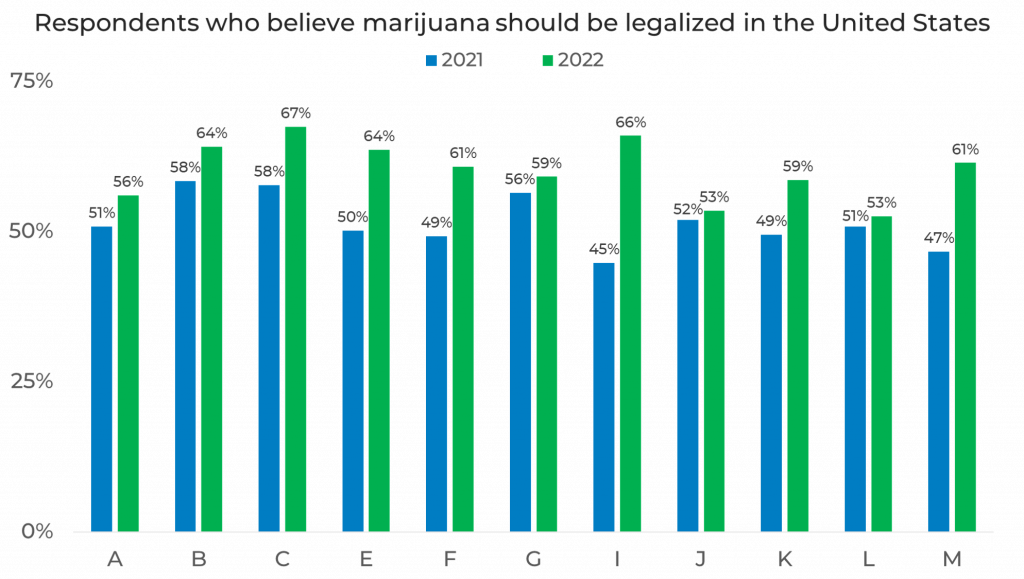
Personal & Medical Use
We also asked respondents if they are in favor of marijuana for personal or medical use. The intention for how marijuana will be used has an impact on the perception of its legalization, especially by demographic. It is also different from the overall legalization of marijuana as we asked above.
Overall
Overall, the percentage of respondents that believe marijuana should be legalized for personal reasons has increased around 1% every year. The percentage of respondents that believe marijuana should be legalized for medical reasons increased 7% from 2021.
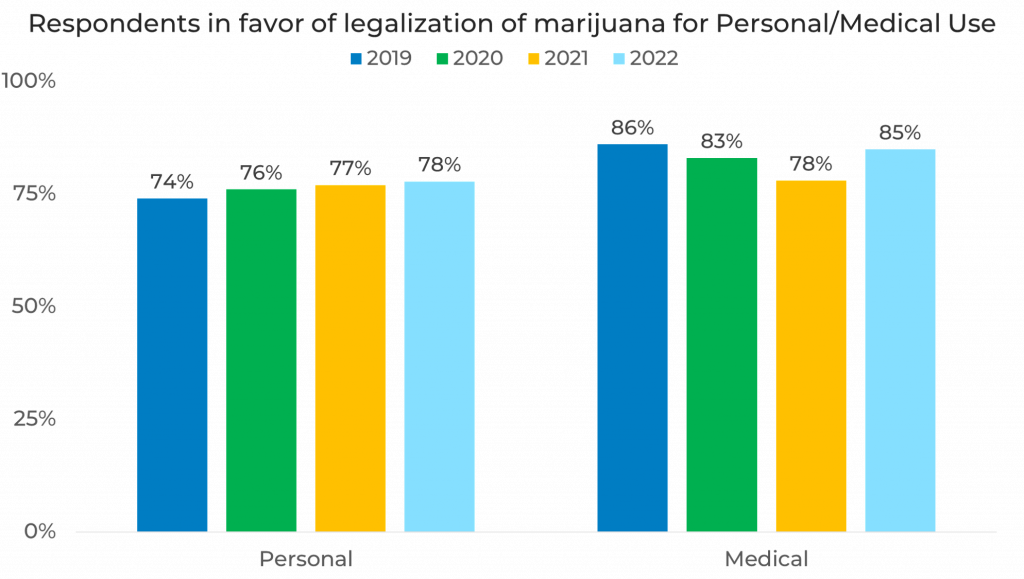
Political Affiliation
When we looked at perceptions of marijuana usage by political affiliation, we saw that Republicans and Democrats feel similarly on the legalization of marijuana for both medical and personal reasons. Democrats are only 2% more likely to believe marijuana should be legalized for personal use. This contrasts with what we saw above, where Democrats were 19% more likely than Republicans to believe marijuana should be legalized in general.
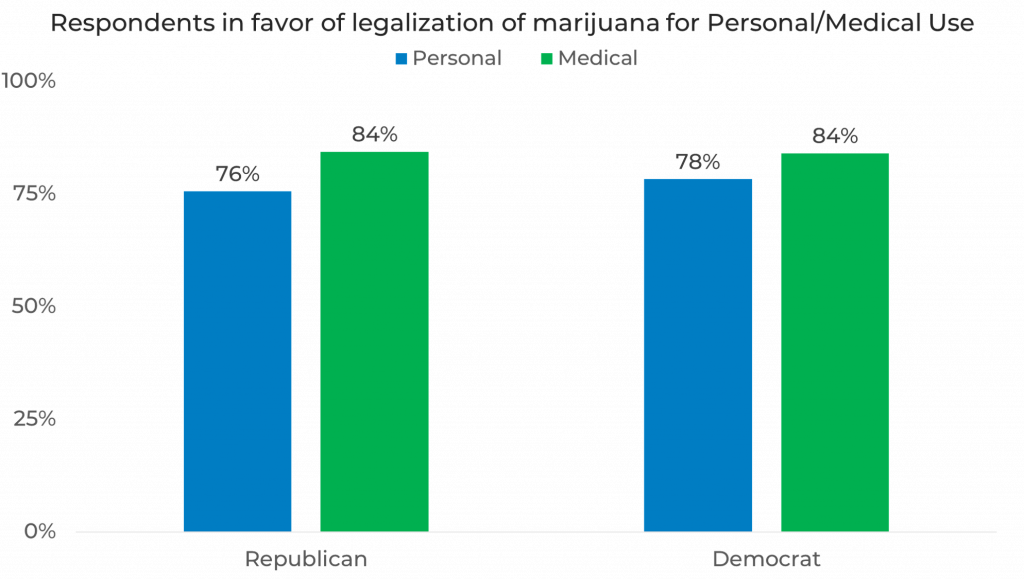
Age
We found that the older a person is, the less likely they are to believe marijuana should be legalized for personal use. However, the older a person is, the more likely they are to believe it should be legalized for medical use. In fact, people over the age of 75 are the least likely to believe it should be legalized for personal use (24% less likely than 35-44-year-olds), but the most likely for medical use, and vice versa for 18-24-year-olds.
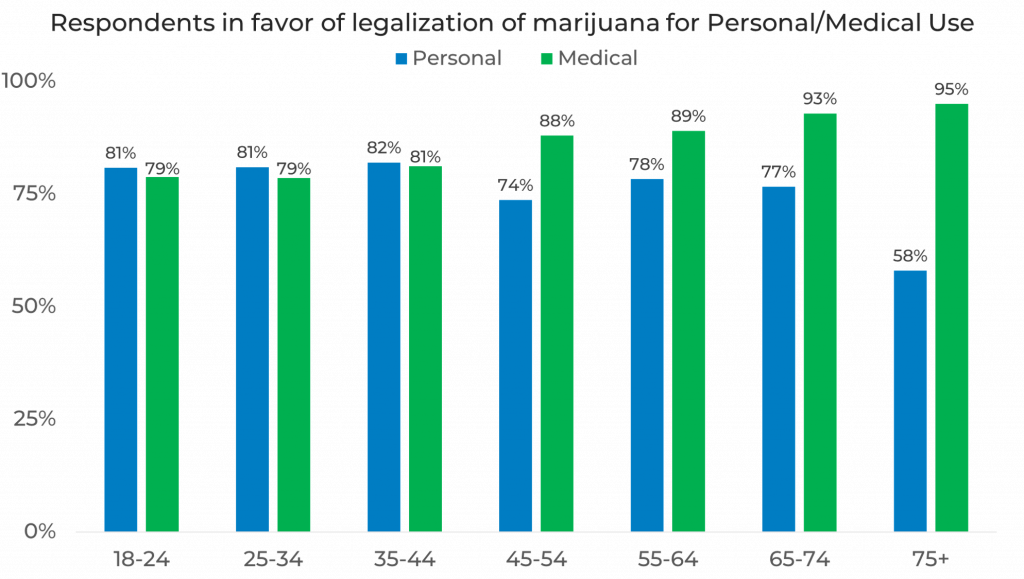
Panel
When looking at respondents in favor of marijuana legalization for personal/medical use, we see up to a 15% difference among panels of people that believe marijuana should be legalized for personal use.
We also see up to a 19% difference among panels of people that believe marijuana should be legalized for medical use. These differences in opinion of hot-button issues like this can indicate significant differences in the accuracy of your data for significant business decisions.
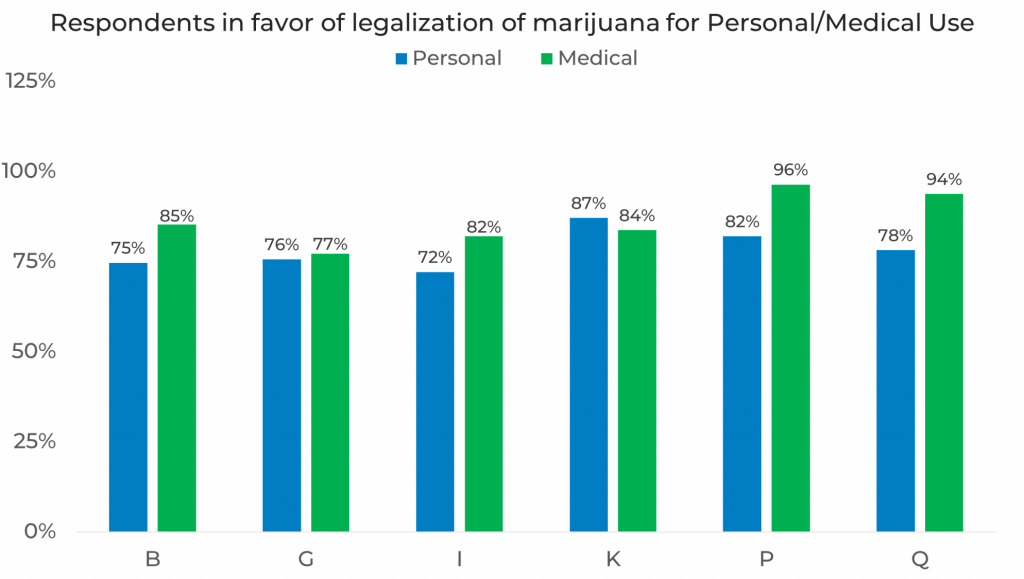
As we see in this blog, public perception and consumer opinion can vary by both demographic and panel. That is why strategic sample blending is the best practice to ensure your data is safe from sample bias and is consistent over time. This allows you to trust that any changes are due to shifts in the market, not inaccuracies in your data. To learn more about how panels are different and best practices for eliminating sample bias, check out our Strategic Sample Blending Approach.

